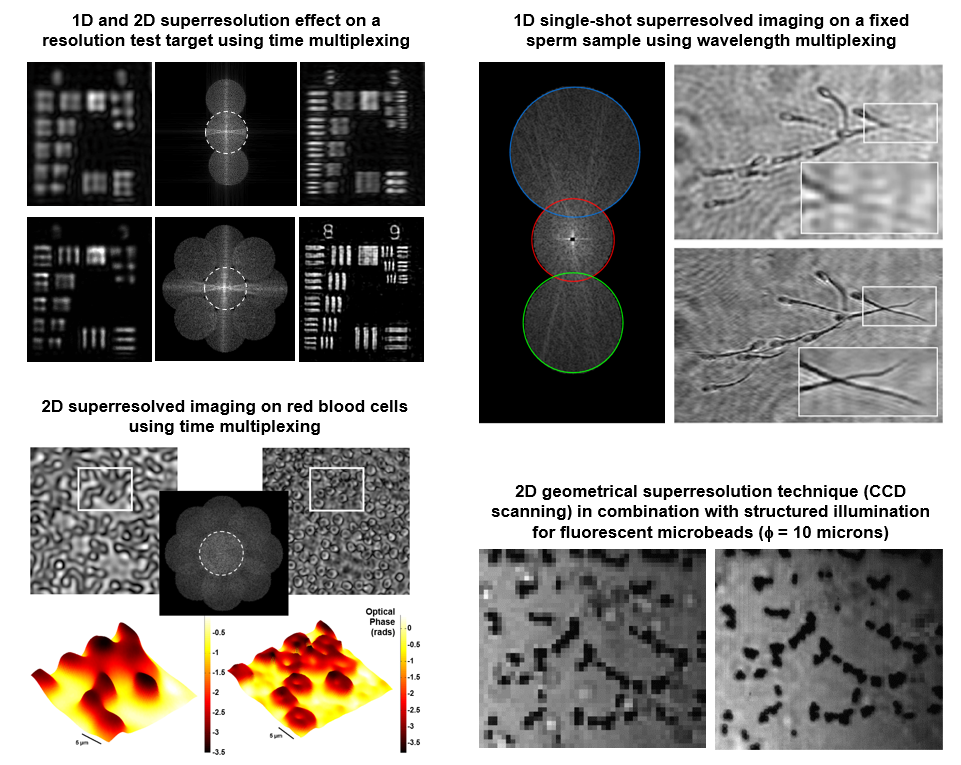Optical and Geometrical Superresolution
Superresolution (here denoted as the capability for enhancing the resolution to surpass the limit imposed by diffraction and proportional to λ/NA) is one of the most fascinating and applicable fields in optical data processing. The urge to obtain highly resolved images using low quality imaging optics and detectors is very appealing. The field of superresolution may be categorized into two groups: diffractive and geometrical superresolution.
The first one deals with overcoming the resolution limit dictated by the diffraction laws and, essentially, is related to the numerical aperture of the imaging lens. Thus, it is possible to synthetically expand up the cutoff frequency of the imaging system by using different approaches such as structured illumination or tilted beam illumination. In combination with holographic recording, the complex synthetic aperture will produce a superresolved image in comparison with the one provided by the same imaging system without implementing the specific illumination strategy.
The second field overcomes the limitation determined by the geometrical structure of the detector array and can also be implemented using different strategies such as shifting the recorded image below the pixel size and subpixel displacement of the recording sensor.
On both cases, the improvement is thus made at the price of sacrificing unused degrees of freedom such as time, wavelength, polarization or field of view depending on the a priori available information about the object to be imaged. The development of new superresolution approaches is of special interest inside the group.


















